

Venero la Parola di Dio, l’Icona ed il Crocifisso.
Traccio sulla mia persona il Segno della mia fede, il Segno della Croce, il Segno che mi è stato donato nel Battesimo e che mi contraddistingue come cristiano.
“Accogliendo ora la sua Croce gloriosa, quella Croce che ha percorso insieme ai giovani le strade del mondo, lasciate risuonare nel silenzio del vostro cuore questa parola consolante ed impegnativa: <Beati…>”.
[XVII GMG Toronto, Festa di accoglienza dei giovani, Discorso di Giovanni Paolo II, 25 Luglio 2002]
“Il Dio, diventato agnello, ci dice che il mondo viene salvato dal Crocifisso e non dai crocifissori. Il mondo è redento dalla pazienza di Dio e distrutto dall’impazienza degli uomini.”
[S. Messa di inizio del Ministero Petrino, Omelia di Benedetto XVI, 24 Aprile 2005]
Invoco lo Spirito Santo:
Vieni, Spirito Santo,
e irrompi come un vento impetuoso nelle nostre comunità,
vieni a sconvolgere le nostre liturgie troppo rigide, i nostri consigli parrocchiali, pastorali,
troppo convenzionali, le nostre catechesi troppo dotte,
vieni a portare vita in queste nostre comunità troppo polverose, ammuffite, troppo ordinate.
Vieni Spirito Santo come un fuoco ardente,
brucia tutto ciò che ci impedisce di seguire il Vangelo di Gesù,
brucia ogni nostro atteggiamento meschino, brucia ogni carico inutile,
brucia ogni paura e ogni gelosia.
Infiamma il nostro cuore, di un coraggio a tutta prova,
di una generosità senza limiti, di una misericordia inesauribile.
Vieni, Spirito Santo, e insegnaci a parlare l'unico linguaggio che tutti possono comprendere:
il linguaggio dell'amore, della salvezza, del perdono.
Liberaci da tutto ciò che complica, indebolisce e annienta le nostre parole.
Donaci di portare a tutti il lieto annuncio con parole cariche di bontà e rispetto.
Veni, Sancte Spiritus
Veni, per Mariam.
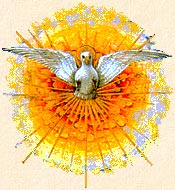
Contemplo i segni della Passione che sono impressi nel Crocifisso.
“Raccolti intorno alla Croce del Signore, guardiamo a Lui…”
[XVII GMG Toronto, Festa di accoglienza dei giovani, Discorso del Santo Padre, 25 Luglio 2002]
Dal libro della Genesi (Gn 1,26-28.31)
26E Dio disse: “Facciamo l’uomo a nostra immagine, a nostra somiglianza, e domini sui pesci del mare e sugli uccelli del cielo, sul bestiame, su tutte le bestie selvatiche e su tutti i rettili che strisciano sulla terra”. 27Dio creò l’uomo a sua immagine; a immagine di Dio lo creò; maschio e femmina li creò. 28Dio li benedisse e disse loro: “Siate fecondi e moltiplicatevi, riempite la terra; soggiogatela e dominate sui pesci del mare e sugli uccelli del cielo e su ogni essere vivente, che striscia sulla terra”.
31Dio vide quanto aveva fatto, ed ecco, era cosa molto buona. E fu sera e fu mattina: sesto giorno.
Parola di Dio
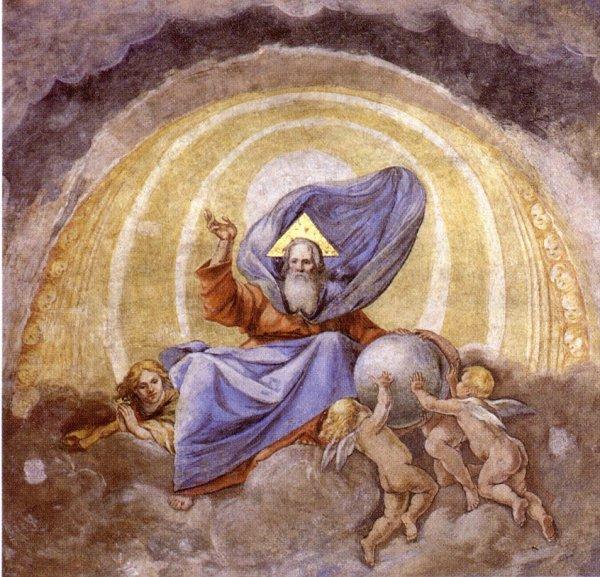
La Parola di Dio scritta nella Bibbia si legge con la penna e non soltanto con gli occhi!
“Lettura” vuol dire leggere il testo sottolineando in modo da far risaltare le cose importanti.
È un’operazione facilissima, che però va fatta con la penna e non soltanto pensata.
MEDITATIO Seduto, rileggo la Parola per più volte, lentamente. Anche la lettura della Parola di Dio è preghiera. Siamo entrati in quella zona più sacra e più lunga del nostro Ritiro on line: “Il Grande Silenzio”! Il protagonista è lo Spirito Santo.
Abramo, benedetto da Dio e chiamato a diventare benedizione per tutte le genti, inaugura la storia dell'Alleanza che corre verso quel centro radioso, quel punto omega dell'universo che è Cristo Signore. Ma è importante risalire ancora alle origini: ad Adamo ed Eva che appena creati "a immagine e somiglianza di Dio" (Gen 1,27) sono stati benedetti. Sgorgati dalle scaturigini di Dio Amore, ricevono da Dio il mandato di crescere e moltiplicarsi immediatamente dopo la benedizione. Di qui la sacralità dell'uomo, della coppia e della procreazione. Tutto ciò è sacro: un sacro mistero d'Amore.
Contesto e linguaggio:
La creazione dell'uomo e della donna è posta all'apice del racconto di tutto quello a cui Dio dà vita in cielo e in terra. Subito dopo, si dice che Dio si riposò in quel "settimo giorno" che Egli benedisse (cf 2,3). E già questa collocazione dice molto! Ci aiuta a interpretarla nel senso giusto il salmista, quando recita: "Hai fatto gli uomini poco meno degli Angeli, di gloria e di onore lo hai coronato, gli hai dato potere sulle opere delle tue mani, tutto hai posto sotto i suoi piedi" (Sal 8,6-7).
Dio ha voluto coronare l'intera creazione creando l'uomo, benedicendolo e consegnando poi a lui tutto il creato, perché, nobile e grande più di ogni altra realtà visibile, lo custodisse e lo dominasse.
Il racconto, scandito nell'immagine dei giorni e delle creature che emergono dal caos, è un capolavoro di poesia religiosa. Se lo ascolti nel silenzio del cuore, ti comunica, nel ritmo stesso della pagina biblica, la potenza del soffio creatore di Dio, anche se il linguaggio è antropomorfico e mitico. Parlare di miti come si è fatto in un certo ambito della nostra cultura? Sì, è possibile, purché non si resti alla superficie, alla crosta esteriore. Certo il linguaggio qui è conforme a quello dei miti sorti in epoche analoghe, presso altri antichi popoli. Ma, come scrive un appassionato studioso del Libro Sacro, "nonostante la profonda affinità di questi racconti con gli antichi miti, noi ci rendiamo conto della loro trascendenza" . Non solo si può dire che tutti i miti dell'antichità hanno, nel racconto biblico, la loro espressione definitiva, ma qui si coglie il vero valore del dettato biblico, quello del simbolo. Proprio per questa forza del simbolo calata nella narrazione della Genesi, tutto si approfondisce e s'illumina. È il mistero di Dio nel suo continuo rapportarsi all'uomo ciò che emerge. Ed è anche il mistero dell'uomo creato a immagine e somiglianza di Dio e benedetto da Lui, ciò che dà il via alla storia e dà ad essa un senso positivo, un fine di speranza.
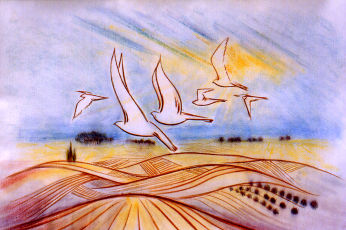
Approfondimento del testo:
v. 26 Facciamo. In questo verbo al plurale c'è già un accenno alla Trinità. Ai Padri sembra di cogliere che Dio si rivolge al Figlio del quale l'evangelista dice: "tutto è stato fatto per mezzo di lui e senza di lui niente è stato fatto" (Gv 1,3). Fa eco S. Paolo: "Per mezzo di lui è creato tutto quello che è in cielo e quello che è in terra, ciò che è visibile e ciò che è invisibile" (Col 1,16). In questo verbo si esprime un momento culminante della creazione. Non è un comando ma un intento. Sta per realizzarsi il più profondo pensiero del Dio-Trinità d'Amore.
v. 27 A immagine di Dio lo creò. Dice Origene: "A immagine di Dio solo l'uomo è stato fatto. Assolutamente nulla del resto delle creature porta questa somiglianza. E questo uomo fatto a immagine di Dio è il nostro uomo interiore". Tutta l'antropologia cristiana ha in questo versetto biblico il suo senso più vero. E in queste parole affonda il significato dell'enorme nobiltà di ogni uomo di qualsiasi razza, cultura, religione e condizione sociale.
A somiglianza. Dicono i Padri che se l'uomo è chiamato "immagine di Dio", perché è la sintesi di tutta la creazione, si dice che è “a somiglianza di Dio” per quel potere che Adamo aveva avuto da Dio di dominare le cose del creato. Interessante quello che dice Beda, uno degli antichi padri latini: "In che cosa l'uomo sia stato fatto a immagine e somiglianza del suo Creatore lo attesta S. Paolo quando ci ammonisce a recuperare in noi, per grazia dello stesso Creatore, quell'immagine e somiglianza che abbiamo perduto nel nostro progenitore: Rinnovatevi - dice - nello spirito della vostra mente e rivestitevi dell'uomo nuovo che è stato creato secondo Dio nella giustizia, nella santità e nella verità (Ef 4,23). Sì, venne il secondo Adamo, cioè lo stesso Signore Creatore nato dalla Vergine, creato incorruttibilmente e immutabilmente a immagine di Dio, pieno di grazia e verità (cf Gv 1,14) per restaurare in noi la stessa immagine e somiglianza".
Maschio e femmina lo creò. È qui il fondamento dell'identica nobiltà dell'uomo e della donna. Entrambi sono a immagine e somiglianza di Dio. E, in un'alterità chiamata a diventare reciprocità e complementarietà, entrambi sono chiamati a realizzare il disegno di Dio: la procreazione della specie. S. Efrem lo esprime con forza icastica: "Adamo era uno ed era due: perché maschio e femmina fu creato".
v. 28 Dio li benedisse e disse loro: siate fecondi e
moltiplicatevi, riempite la terra.
S. Efrem
sottolinea l'importanza della benedizione di Dio sull'uomo appena creato, prima
che trasgredisse perché, per la sua trasgressione, non fossero ostacolate le
altre sue benedizioni. Diversamente il mondo sarebbe ritornato al nulla a causa
della colpa dell'uomo: colui per il quale Dio aveva creato ogni cosa. Importanza
enorme, dunque, della prima benedizione!
Altri antichi commentatori notano: "Questa benedizione di Dio è la
sorgente dalla quale tutto il genere umano è scaturito". Altri notano che il
benedetto per eccellenza è Colui che proclamiamo Figlio del Padre, lui che, come
dice S. Paolo, "è il Cristo, sopra tutte le cose benedetto nei secoli" (Rm
9,5).
v. 31 Dio vide quanto aveva fatto e vide che era cosa molto buona. Se il racconto della creazione nelle sue varie parti viene scandito da quell'importante espressione: "Dio vide che era cosa buona", quanto è importante qui quell'avverbio accrescitivo "molto!" Anzi nei Targum (antiche versioni-parafrasi aramaiche dei testi biblici) leggiamo: "E Dio vide che era molto bello e molto buono". Nessuno sguardo dispregiativo o riduttivo può dunque volgersi sull'uomo, sulla sua realtà di coppia e su quanto Dio gli ha affidato, se interiorizziamo in modo sapienziale questa espressione biblica.
Attualizzazione:
Se crediamo che "la storia dell'uomo è la scoperta di un senso, di un significato interiore agli avvenimenti in cui Dio, sempre e comunque opera salvezza" , cogliamo il senso paradigmatico di quella benedizione là, nell'Eden. È vero quella benedizione si è come affogata col peccato, ma poi ripetutamente è stata di nuovo concessa da Dio. Perché l'uomo ha una splendida chiamata: ritornare alla bellezza, alla pace, all'armonia in cui la benedizione (non contrastata dal "no" a Dio) inonda liberamente la vita umana e del cosmo. Ecco perché vivere veramente è la stupenda avventura di un grande ritorno: il ritorno all'Eden, il paradiso perduto, il ritorno in Cristo Signore, il Benedetto per eccellenza, a quell'"immagine e somiglianza" che è la bellezza, la dignità, il vero bene dell'uomo. Si tratta però di prendere coscienza della grave disaffezione e degrado non solo del creato ma dell'uomo stesso, oggi.
È dunque necessario riappropriarsi di un compito urgente per l'uomo d'oggi: prendersi cura del creato e anche della piena convinzione che l'uomo, ogni uomo è grande perché, anche se deturpato dal peccato, l'immagine e somiglianza di Dio non sono mai del tutto distrutte. Esse sono come il "marchio di Dio" su quello che egli ha voluto non solo gli appartenesse, ma fosse addirittura sua immagine e somiglianza.
Il cammino di consapevolezza della propria dignità e di quella di ogni uomo e donna coincide letteralmente con un cammino spirituale. Si tratta di aprire gli occhi del cuore, oltre che quelli della mente, per capire che tutte le cose possono tornare ad avere una valenza sacra, possono servirci per la pace (e non per la guerra), per la comunicazione e la comunione (e non per la discordia, la competitività, il possesso egoistico), per la bellezza e l'armonia (e non per gli abusi, il disordine e la distruttività).
Allora meditare la creazione e la benedizione di Dio nella Genesi alla luce del NT diventa entusiasmante. Si tratta di interiorizzare in preghiera quanto dice S. Paolo: "Vi siete spogliati dell'uomo vecchio con le sue azioni e avete rivestito l'uomo nuovo, che si rinnova per una piena conoscenza ad immagine del suo Creatore" (Col 3,10).
E l'uomo nuovo per eccellenza è Cristo, come dice ancora S. Paolo (cf Rm 5,10.21) quando focalizza l'antitesi: Adamo-Cristo, uomo vecchio-uomo nuovo, peccato-giustizia, morte-vita. Attenzione! La creazione dell'uomo "secondo l'immagine" non è dunque Adamo ma Cristo. O meglio: Adamo, ancor prima della caduta, è ordinato profeticamente a Cristo "immagine dell'invisibile Iddio, primogenito di tutta la creazione" (Col 1,15).
È dunque su Cristo Gesù che poggia ogni volontà di rinnovamento: delle persone e delle strutture. Su di lui e in vista di quell'energia di benedizione che il Padre ha dato all'uomo e alla donna. Sì, dentro una vocazione di coppia come dentro una vocazione celibataria, importa che l'uomo e la donna vivano da "immagine di Dio" e ne recuperino la "somiglianza".
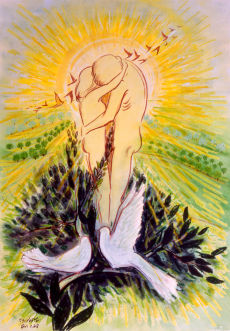
La Parola m’interpella
Ø Colgo, nel mio vivere, che spesso c'è disarmonia: un prevalere di forze negative e distruttive, un groviglio di avidi desideri di possesso circa cose o persone. Mi rendo conto che così l'immagine di Dio si offusca e la somiglianza si straccia, e c'è degrado in quello che sono e che opero?
Ø Fare un cammino spirituale significa per me "rivestire l'uomo nuovo" che è Cristo Gesù, il suo modo di pensare di amare e di agire. Io indugio forse dentro il "vecchio Adamo", cedendo alle sue tentazioni?
Ø Che senso di rispetto, di responsabilità e di gioia ho nei riguardi del creato? Sono forse possessivo verso alberi, fiori, animali? E verso l'uomo e la donna? Come gestisco la mia sessualità, il rapporto di coppia? E l'amicizia?
Ø Mi riposa, mi dà gioia e coraggio la certezza che al principio di tutto c'è una grande benedizione? Essa mi catapulta dal non senso, dalla tristezza, dal pessimismo e dalla robotizzazione (perfino dei gesti della procreazione!) nella energia del "crescete e moltiplicatevi" (Gen 2,28), inteso in modo sacro, ampio e profondo perché legato alla benedizione di Dio?
Ø Credo nella benedizione del mio poter generare nello Spirito e nella fede, oltre che nella carne?
La meditazione non è fine a se stessa, ma tende a farmi entrare in dialogo con Gesù, a diventare preghiera.
ORATIO Domando umilmente di poter essere coerente con le indicazioni emerse dalla meditatio. Esprimo fede, speranza, amore. La preghiera si estende e diventa preghiera per i propri amici, per la propria comunità, per la Chiesa, per tutti gli uomini. La preghiera si può anche fare ruminando alcune frasi del brano ripetendo per più volte la frase/i che mi hanno fatto meditare.
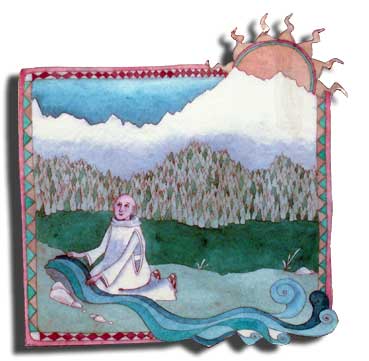
Trovo un posto appartato, meglio se al cospetto della natura.
Mi percepisco uscito/a dal cuore di Dio,
creato/a a sua immagine e somiglianza.
Respiro grandezza, stupore, senso della mia intensa nobiltà.
Non posso però dimenticare i miei… "guasti", il mio peccato.
Ecco: mi consegno al Signore con profonda gratitudine.
Prendimi così, nella mia debolezza, Signore!
Rinnova su di me la tua benedizione,
perché io diventi quello che sono: tua immagine e somiglianza.
CONTEMPLATIO Avverto il bisogno di guardare solo a Gesù, di lasciarsi raggiungere dal suo mistero, di riposare in lui, di accogliere il suo amore per noi. È l’intuizione del regno di Dio dentro di me, la certezza di aver toccato Gesù.
È Gesù che ci precede, ci accompagna, ci è vicino, Gesù solo! Contempliamo in silenzio questo mistero: Dio si fa vicino ad ogni uomo!
Per Cristo, con Cristo e in Cristo
a te, Dio Padre Onnipotente,
nell’unità dello Spirito Santo,
ogni onore e gloria
per tutti i secoli dei secoli.
ACTIO Mi impegno a vivere un versetto di questo brano, quello che mi ha colpito di più nella meditatio, che ho ripetuto nell’oratio, che ho vissuto come adorazione e preghiera silenziosa nella contemplatio e adesso vivo nell’actio.
Si compie concretamente un’azione che cambia il cuore e converte la vita. Ciò che si è meditato diventa ora vita!
Prego con la Liturgia della Ore, l’ora canonica del giorno adatta al momento.
Concludo il momento di lectio recitando con calma la preghiera insegnataci da Gesù: Padre Nostro...
Arrivederci!
JJJJJJJJJJJJJJJJJJJJJJJJJJJJJJJJJJJJJJJJJJJJJJJJJJJJJJJJJJJJJJJJJ
Ritiro On Line in lingua inglese
ON LINE RETREAT
NOVEMBER 2006
I worship the Word of God, the Icon and Crucifix.
I trace the Sign of my faith, the Sign of the Cross, on myself. It is the Sign which was given to me in Baptism and distinguishes me as Christian.
“Now that we are about to welcome his glorious Cross, the Cross that has accompanied young people on the roadways of the world, let this consoling and demanding word echo in the silence of your hearts: <Blessed are they…>”.
[XVII World Youth Day in Toronto, Welcoming Ceremony to the Young People, Address of John Paul II, 25 July 2002]
“God, who became a lamb, tells us that the world is saved by the Crucified One, not by those who crucified him. The world is redeemed by the patience of God. It is destroyed by the impatience of man.”
[Mass for the beginning of the Petrine Ministry, Homily of Benedict XVI, 24 April 2005]
I invoke the Holy Spirit:
Come, Holy Spirit,
sweep across our communities like a raging wind,
come and upset our too rigid liturgies, our too fixed
parish and pastoral councils, our too erudite catecheses,
come and liven up our dusty, fossilised, too orderly communities.
Come, Holy Spirit, like a glowing fire,
burn all that prevents us following the Gospel of Jesus,
burn each of our mean actions, every useless load,
every fear and jealousy.
Inflame our hearts with true courage,
a boundless generosity, an inexhaustible mercy.
Come, Holy Spirit, and teach us to speak the only language everyone can understand:
the language of love, salvation, forgiveness.
Free us from all that complicates, weakens and annihilates our words.
Grant us to give everyone the good news with words full of goodness and respect.
Veni, Sancte Spiritus
Veni, per Mariam.
I contemplate the signs of the Passion which are impressed in the Crucifix.
“Gathered around the Lord's Cross, we look to Him…”
[XVII World Youth Day in Toronto, Welcoming Ceremony to the Young People, Holy Father's Address, 25 July 2002]
From the Book of Genesis (Gn 1,26-28.31)
26God said, “Let us make man in our own image, in the likeness of ourselves, and let them be masters of the fish of the sea, the birds of heaven, the cattle, all the wild animals and all the creatures that creep along the ground.” 27God created man in the image of himself, in the image of God he created him, male and female he created them. 28God blessed them, saying to them, “Be fruitful, multiply, fill the earth and subdue it. Be masters of the fish of the sea, the birds of heaven and all the living creatures that move on earth”.
31God saw all that he had made, and indeed it was very good. Everything came and morning came: the sixth day.
Word of God
The Word of God written in the Bible should be read with the help of a pen, not just with the eyes!
“Reading” also involves underlining the text so as to highlight the important parts.
It's a very simple thing, but must be done with a pen, not just thought of.
MEDITATIO While sitting, I read the Word slowly, several times. Reading the Word of God is also praying. We have entered the most sacred and longest phase of our on-line Retreat: “The Great Silence”! The Holy Spirit is the protagonist.
Abraham, blessed by God and called to become a blessing for all men, inaugurates the history of the alliance, which runs towards a radiating centre, an omega point in the universe, Christ the Lord. But it is important to trace the origins, namely, to go as far back as Adam and Eve who, soon after being created "in the image and likeliness of God" (Gn 1,27), were blessed. Having sprung from Loving God, they are assigned the divine task of being fruitful and multiplying immediately after the blessing. Hence the sacredness of man, the couple and procreation. All this is sacred: a sacred mystery of love.
Background and language:
The creation of man and woman is the climax of the narrative of all that God gives birth to in heaven and on earth. Soon afterwards, it is said that God took a rest on that “seventh day" which He blessed (cf 2,3). This background is revealing! The Psalmist helps us interpret it correctly: "You have made him little less than a god, you have crowned him with glory and beauty, made him the lord of the works of your hands, put all things under his feet" (Ps 8,6-7).
God wanted to crown the whole creation creating man, blessing him and delivering him to the universe, so that man, being a nobler and greater creature than any other living being, could cherish and subdue it.
The Genesis narrative, highlighted through the images of the days and creatures emerging from chaos, is a masterpiece of religious poetry. If you listen to it in the quiet of your heart, it will transmit you the power of God's creative blow, at the same rhythm as the Bible page, although the language is anthropomorphic and mythical. Dealing with myths as we have done in a certain sector of our culture is possible, providing we don't remain on the surface, on the external crust. Here the language used is indeed consistent with that of the myths emerged in similar times with other ancient peoples. However, as an enthusiast biblical scholar writes, "despite the remarkable affinity between these tales and ancient myths, we are aware of their transcendental character". Not only can we say that all ancient myths find their definitive expression in the Bible; here we grasp the real value of the biblical dictate, that of the symbol. It is right because of the force of the symbol, visible in the tale of Genesis, that everything acquires a deeper meaning and a new light. What stands out is the mystery of God in his continuous relationship with man. It is also the mystery of man created in God's image and likeliness and blessed by Him that kicks off history giving it a positive meaning, a hopeful aim.
A thorough reading of the text:
v. 26 Let us make. This plural verb has a hint of the Trinity. The Fathers believe that God addresses to his Child, of whom the evangelist says: "all has been done through him and without him nothing has been done" (Jn 1,3). St. Paul echoes: "For him were created all things in heaven and on earth: everything visible and everything invisible" (Col 1,16). A culminating moment of the creation is expressed through this verb. It's not a command but a purpose. The deepest thought of Trinity God, God of love, is coming about.
v. 27 In the image of God he created him Origen says: "Man was created in the image of God. Absolutely none of the other creatures bears such a resemblance. This man made in the image of God is our inner man". All Christian anthropology finds its true meaning in this biblical verse. From these very words man's unique nobility stands out, whatever his race, culture, religion and social status.
In his likeliness According to the Fathers, if man is called "image of God" being the synthesis of the whole creation, he is in God's likeliness because of that power Adam had received by God to subdue the things of the creation. Particularly interesting is the thought of Beda, one of the ancient Latin fathers: "St. Paul explains why man was made in his Creator's image and likeliness when he warns us to recover in us, with God's grace, that image and likeliness which we have lost in our progenitor: Your mind – he says – must be renewed in spirit so that you could put on the new man that has been created on God's principles, in the uprightness and holiness of the truth (Ep 4,23). Yes, a second Adam came along, the same Lord Creator born of the Virgin, incorruptibly and unchangeably created in God's image, full of grace and truth (cf Jn 1,14) to recover in us the same image and likeliness".
Male and female he created them. Here we find the basis of the identical nobility of men and women. Both are in God's image and likeliness. In an otherness which is called to become reciprocity and complementarity, both are called to accomplish God's plan: the procreation of the species. St. Efrem expresses that sharply: "Adam was one and was two: for male and female he was created".
v.
28 God blessed them, saying to them, “Be fruitful, multiply, fill the earth”
. St. Efrem points out the importance of God blessing the newly created
man before man’s transgression, so that his further blessings could not be
hindered because of that act. Otherwise the world would have returned to
nothingness owing to man, for whom God had created everything. Hence the
enormous importance of the first blessing!
Other ancient commentators note: "This God's blessing is the source from
which all mankind originated". Others observe that the most blessed is the
one we proclaim Son of the Father, he who, as St. Paul says, "is Christ who
is above all, God, blessed for ever (Rm 9,5).
v. 31 God saw all that he had made, and indeed it was very good. If the creation narrative repeats, in various parts, that important expression: "God saw all that it had made, and indeed it was very good", here that adverb "very!" is of particular importance. In the Targums (ancient Aramaic versions and paraphrases of the biblical texts) we even read: "And God saw it was very nice and very good". No disdainful or belittling glance can therefore be cast on man, on the significance of the couple and on what God has entrusted it with, if we internalise this biblical expression in a sapiential perspective.
Living the passage:
If we believe that “the history of man is the discovery of a sense, of an inner meaning of the events in which God always gives salvation", we catch the exemplary meaning of the blessing given in Eden. True, that blessing was first overshadowed by sin, but then it was repeatedly granted again by God. For man has a wondrous calling: returning to the beauty, to peace, to the harmony where the blessing (not opposed by the "no" to God) fills human life and the universe. That's why a life lived in its full meaning is the wonderful adventure of a great return: the return to Eden, the paradise lost, the return to Christ the Lord, the Most Blessed par excellence, to that "image and likeliness" which is beauty, dignity, the true good of man. But we need to become aware of the serious disaffection and degradation not just of the creation but of man himself, today.
It is therefore vital to resume a task which is urgent for today's man: take care of the world and be convinced that every man, albeit tarnished by sin, is great because his image and likeliness of God are never completely destroyed. They are like the "mark of God" on all that He not only wanted to belong to man, but also to be in His image and likeliness.
The process of becoming aware of one's dignity, of the dignity of man and woman literally coincides with a spiritual journey. We must open the eyes of our hearts, the eyes of our minds to understand that things can re-acquire their sacred meaning, they can be of help to us for peace (not for war), for communication and communion (not for clashes, competitiveness, selfish possession), for the beauty and harmony (not for abuse, chaos and destructivity).
Meditating God's creation and blessing in the Genesis in the light of the New Testament becomes an exciting task. In our prayer, we should internalise St Paul's words: "You have put on a new self which will progress towards true knowledge the more it is renewed in the image of its Creator" (Col 3,10).
The new man par excellence is Christ, as St Paul says (cf Rm 5,10.21) when focusing on the Adam-Christ, old man-young man, sin-justice, death-life antithesis. Watch out! The creation of man "in the image" is not Adam, but Christ. Or better, Adam, before his fall, is prophetically ordered to Christ "image of the unseen God, the first-born of all creation" (Col 1,15).
Therefore, every will of renewing people and structures rests on Jesus Christ. On Him and in view of that blessing energy the Father gave to the man and woman. Both in a vocation of couple and of single, what matters is that men and women live their "God's image" and recover the "likeliness".
The Word asks me questions
Ø Do I realise there is often a lack of harmony in my life, that is, a predominance of negative, destructive forces, a tangle of greedy desires to possess things and people? Am I aware that in this way God's image is obscured, likeliness fades, and there's neglect in myself and my actions?
Ø Does going on a spiritual journey mean, for me, "put on the new man" that is Jesus Christ, his way of thinking, loving and acting? Do I hesitate like Adam, giving in to temptations?
Ø What sense of respect, responsibility and joy do I have towards the creation? Am I perhaps possessive towards trees, flowers, animals? Towards men and women? How do I manage my sexuality, couple relationship, and friendship?
Ø Is it a joy, an encouragement for me to know with certainty that there is a blessing before everything? Does that catapult me from nonsense, sorrow, pessimism and robotization (even of procreation acts!) into the energy of that “be fruitful, multiply" (Gn 2,28), intended in a sacred, broad and deep sense, being related to God's blessing?
Ø Do I believe in my being able to generate in the Spirit and faith, in addition to flesh?
Meditation is not a practice for its own sake; it tends to make me enter into a dialogue with Jesus, to become prayer.
ORATIO I humbly pray for being consistent with the indications emerged from the meditatio. I express faith, hope, love. Prayer extends and becomes such for our friends, our community, for the Church, for all men. Prayer can also be recited by humming along some phrases of the passage, repeating that or those which struck me most for my meditation.
I find a solitary place, possibly amid nature.
I feel that I've come out of God's heart,
that I've been created in His image and likeliness.
I breathe the greatness, amazement, the sense of my profound nobility.
But I can't forget my faults, my sin.
Here I am, I give myself up to the Lord with deep thankfulness
My Lord, love me the way I am, with my weaknesses!
Renew your blessing on me,
so that I become what I am: your image and likeliness.
CONTEMPLATIO I feel the need to only look at Jesus, let myself be reached by His thought, rest in him, receive His love for us. It’s the feeling of having the kingdom of God inside me, the certainty of having touched Jesus.
It’s Jesus preceding us, accompanying us, standing by us, Jesus alone! Let us contemplate this mystery: God drawing close to each man!
Through Him, with Him and in Him,
in the unity of the Holy Spirit,
all glory and honour is yours, Almighty Father,
forever and ever.
ACTIO I commit myself to living a verse of this passage, the one which struck me most in the meditatio, I repeated in the oratio, lived as adoration and silent prayer in the contemplatio and am now living in the actio.
An action is done which changes our hearts round and causes a U-turn in our lives. What has been meditated becomes life now!
I pray with the Liturgy of the Hours, the canonic time of the day suitable for the moment.
I conclude the lectio reciting the prayer Jesus taught us: Our Father….
Bye for now!